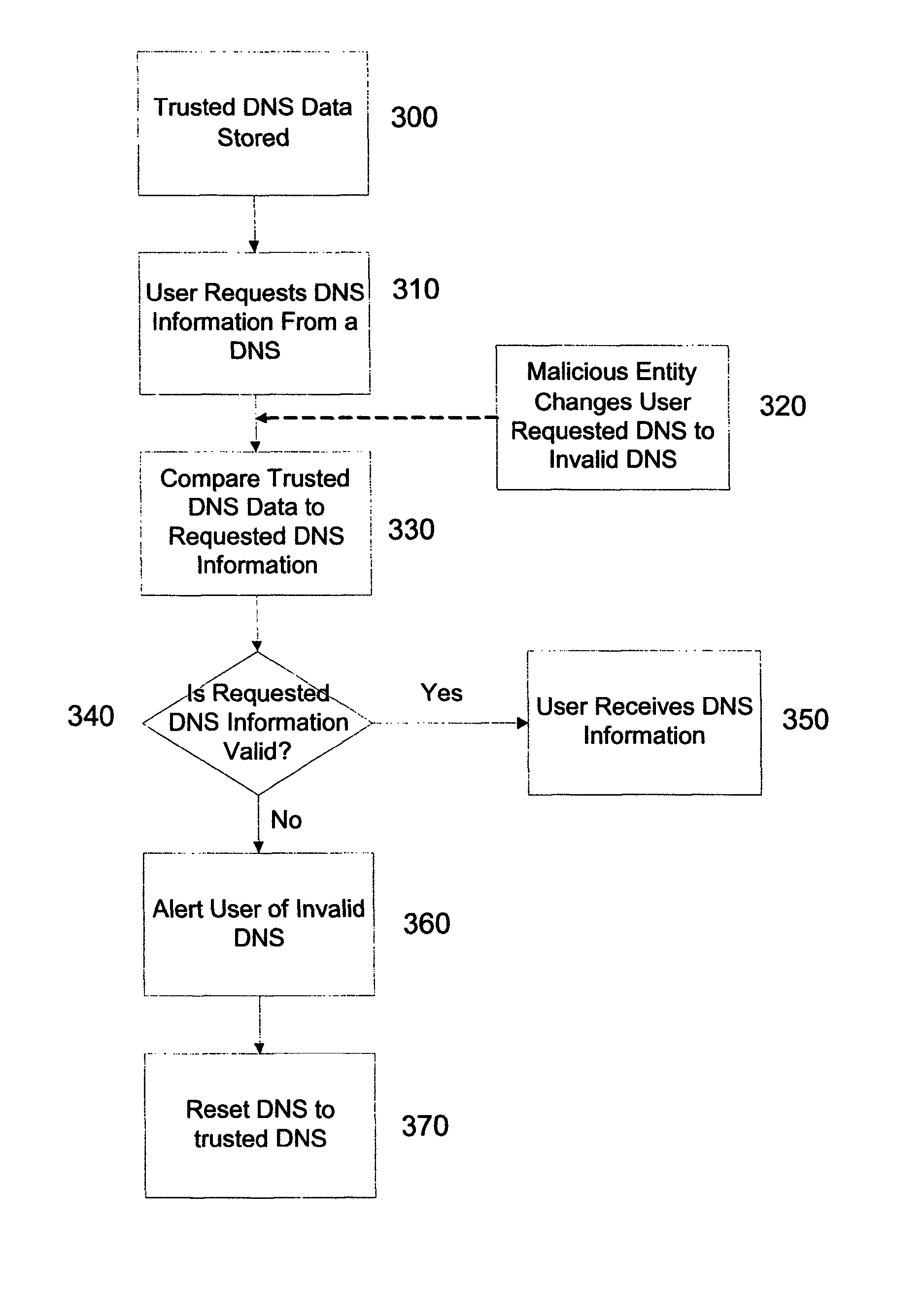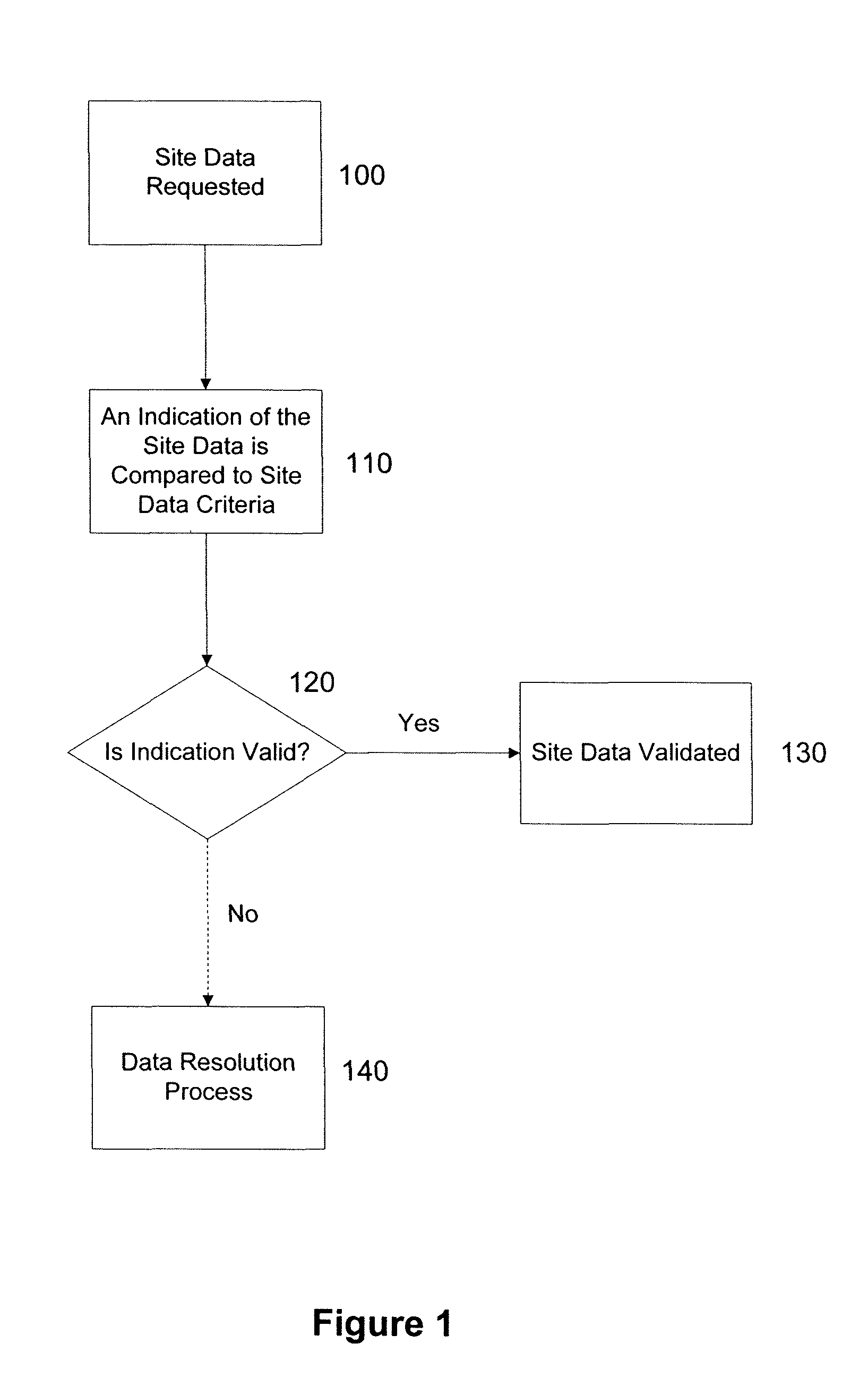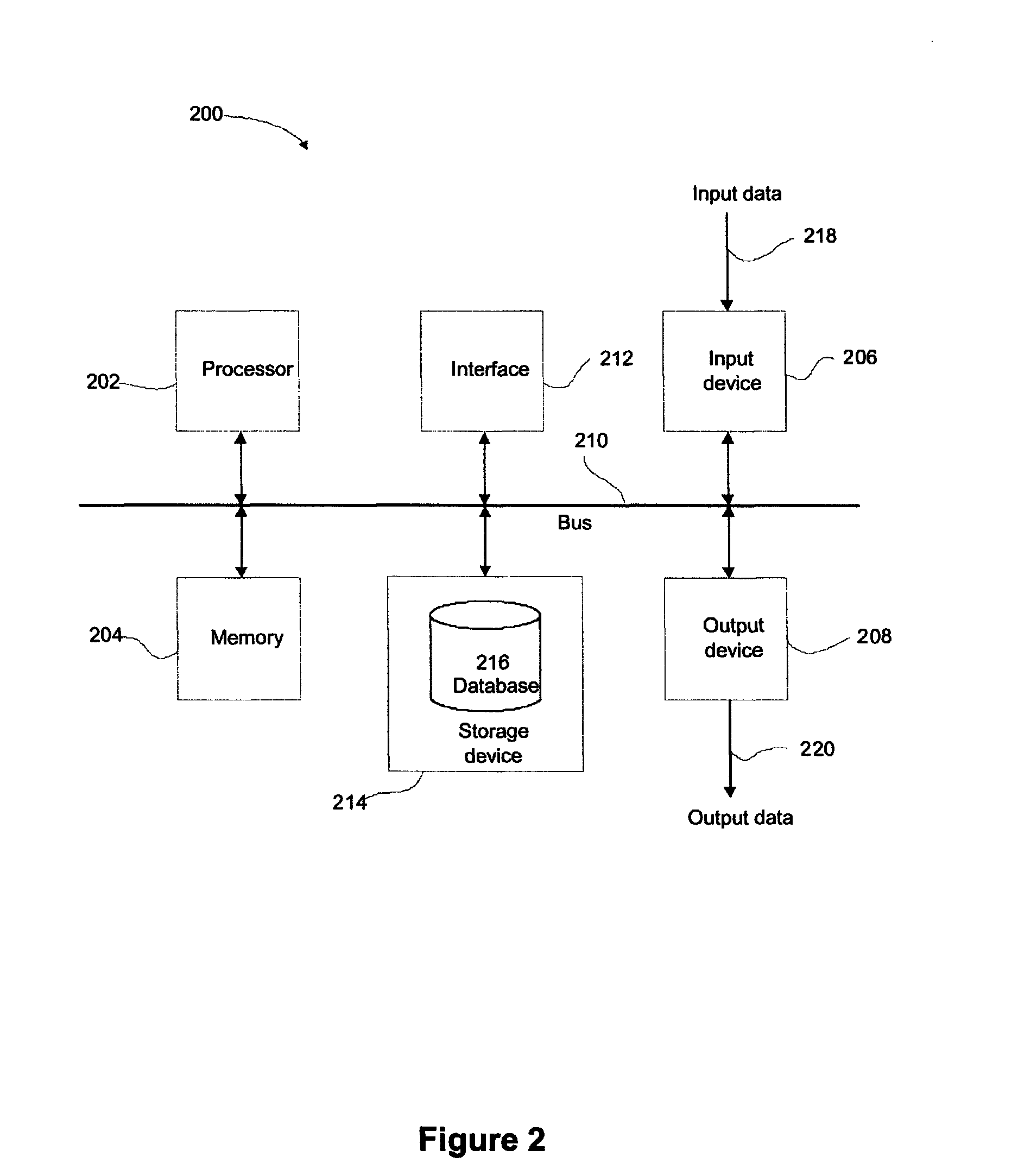Method and system for validating site data
a site data and validation method technology, applied in the field of computing, can solve problems such as inconvenience or misleading users, redirections and subjected to counterfeit information, and the opportunity exists for links to be intercepted and changed by malicious entities
- Summary
- Abstract
- Description
- Claims
- Application Information
AI Technical Summary
Benefits of technology
Problems solved by technology
Method used
Image
Examples
example 1
[0048]FIG. 3 shows an example implementation of determining whether a malicious entity has attacked a user's request for site data at the DNS level. At step 300 trusted DNS data / information is stored (and can be stored in the database 216 of the processing system 200). At step 310 a user requests DNS data / information (i.e. a request to receive an indication of site data) from a DNS. It is possible, that at this stage, at step 320, a malicious entity can change the user's requested DNS data / information to invalid DNS data / information. Accordingly, at step 330 the trusted DNS data / information is compared to the requested DNS data / information. At step 340 it is determined whether the requested DNS data / information is valid.
[0049]If the requested DNS information is valid, the user can then receive the DNS information at step 350. Otherwise, at step 360 the user can be alerted to the invalid DNS, and the invalid DNS can be reset to the trusted DNS at step 370.
[0050]Accordingly, in a part...
example implementations
at Link Level
Example 1
Protect from Change of the URL Information on the Way in
[0074]An example process for protecting a change to a link is shown in FIG. 5. At step 500 a user requests a website, webpage, or the like. At step 510, website data associated with the requested website is sent to the user. At step 520 the website data sent to the user is intercepted by the processing system 200, or a program on the user's terminal, and is stored. At this stage, a malicious entity can change the website data, prior to the website data being displayed to the user, at step 530.
[0075]At step 540 the user receives the website data. At step 550 the received website data is compared to the previously stored website data. At step 560 it is determined whether the website data is valid. If the website data is valid, then the process ends at step 570. Otherwise, the user can be alerted at step 580 and the user can optionally block the website being displayed at step 590.
[0076]Accordingly, in a part...
example 2
Protect from Change in the URL Information on the Way Out
[0085]FIG. 6 shows another example process for protecting a change to a link. At step 600 a website is displayed to a user. At step 610 the user requests link information, which is displayed on the website. The user's request is stored at step 620. At step 630, a malicious entity may change the user's request.
[0086]At step 640 the user's request is sent to a DNS, where at step 650 the link information is sent to the user. At step 660 the link information is intercepted in order to determine whether the link information is valid at step 670. If the link information is valid, then at step 690, a link-associated website is displayed to the user. Otherwise, at step 680 the user is alerted to the invalid link information.
[0087]Notably, the following method can be used so that it is assumed that the URL information displayed to the user is valid. Accordingly, in a particular implementation, the following steps may be performed:[0088...
PUM
 Login to View More
Login to View More Abstract
Description
Claims
Application Information
 Login to View More
Login to View More - R&D
- Intellectual Property
- Life Sciences
- Materials
- Tech Scout
- Unparalleled Data Quality
- Higher Quality Content
- 60% Fewer Hallucinations
Browse by: Latest US Patents, China's latest patents, Technical Efficacy Thesaurus, Application Domain, Technology Topic, Popular Technical Reports.
© 2025 PatSnap. All rights reserved.Legal|Privacy policy|Modern Slavery Act Transparency Statement|Sitemap|About US| Contact US: help@patsnap.com



